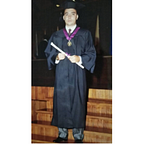Common Orthodontics Practices
Orthodontics is a specialized branch of dentistry that deals with correcting teeth and jaw structure to improve a patient’s smile and dental health. After attending college, orthodontists proceed to dental school and then orthodontic school. They spend time in an orthodontic residency program upon graduation, typically two to three years. Using their training, knowledge, and expertise in tooth movements and facial irregularities, orthodontists help you to understand the best treatment options for your orthodontic needs. Orthodontists also deal with other medical conditions such as jaw pain, difficulty chewing, gum disease, speech impediments, and sleep apnea.
An orthodontist’s primary work is to diagnose and treat malocclusions and anomalies of the oral cavity. After diagnosis, the orthodontist designs appropriate dental appliances that help to realign your jaw and teeth. The typical abnormalities include maligned teeth, crossbite, underbite, and overcrowding teeth.
A crossbite is a bite with the upper teeth that sit inside the lower teeth when you close the mouth. Also described as a misaligned bite, it can cause your teeth to chip or wear down. Due to unintentional biting, crossbites might affect the patient’s cosmetic appearance and lip pain. On the other hand, an underbite is when the lower teeth extend farther out than the upper teeth. Crowding occurs when the mouth lacks enough room to accommodate all your teeth. It becomes hard to floss with crowded teeth, and if an orthodontist does not correct the situation, it may contribute to tooth decay.
An orthodontist takes bite impressions of your mouth and examines your teeth using digital X-rays for a thorough assessment. They will then offer different treatment options based on your smile goals or unique needs. Options for correcting crossbite or crowding include braces that gently guide your teeth into proper alignment. Braces can be used to treat both crossbite and overcrowding. The braces, which can be metal or ceramic, exert gentle pressure on your teeth over time to align the teeth in the desired position and shape the bone holding the teeth.
Invisalign are clear plastic aligners that are good when you don’t want metal braces. Some people might need to use headgear that exerts pressure to help move teeth into the desired alignment. Another appliance that an orthodontist can use is palatal expanders. These help in broadening the curve of your upper jaw. However, unlike aligners or braces, palatal expanders work on the mouth bones and joints in correcting the misalignment.
When undergoing orthodontic treatment, you will at some point probably end up wearing or using a retainer. After the braces come off, it is common to wear a retainer for several months. Retainers are made of braided or solid wires curved to snugly fit the shape of the newly aligned teeth so that they don’t begin shifting back to their old positions. There are situations where a patient might only require to use retainers without any other orthodontic appliance.
Someone with a severe overbite or underbite may need to undergo corrective surgery to shorten or lengthen the jaw. The orthodontist uses surgical screws, wires, or plates to support the affected jaw bone during the operation. However, jaw surgery is only done if other less invasive orthodontic treatments are not possible or have been unsuccessful.
